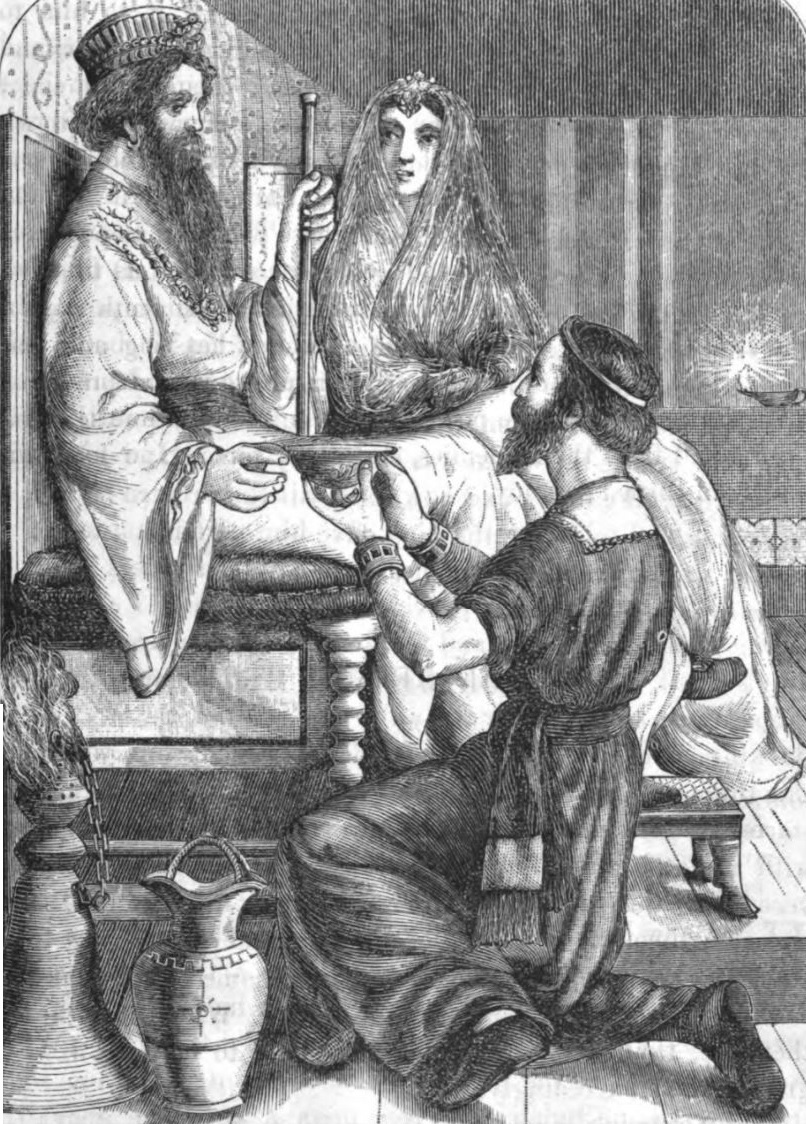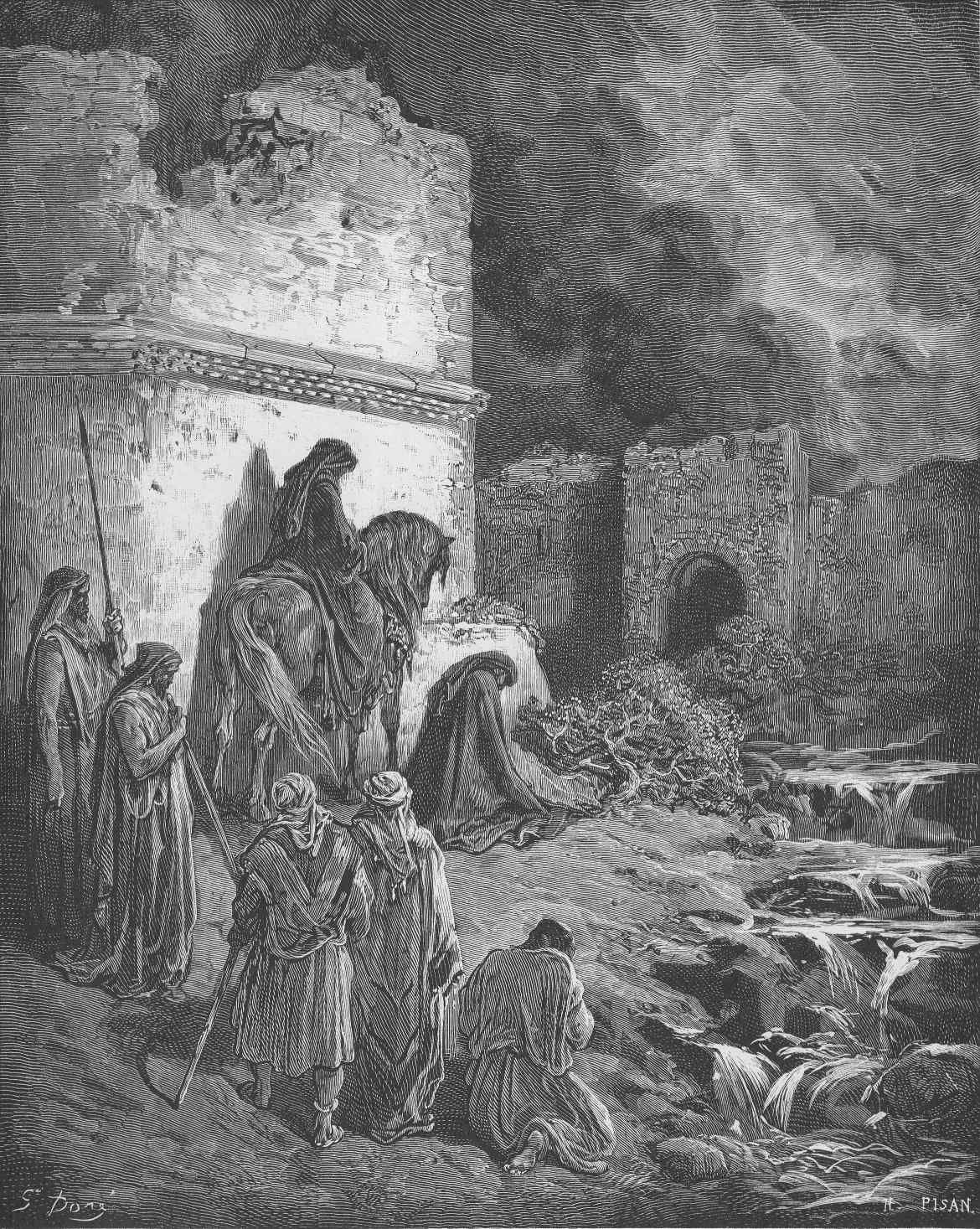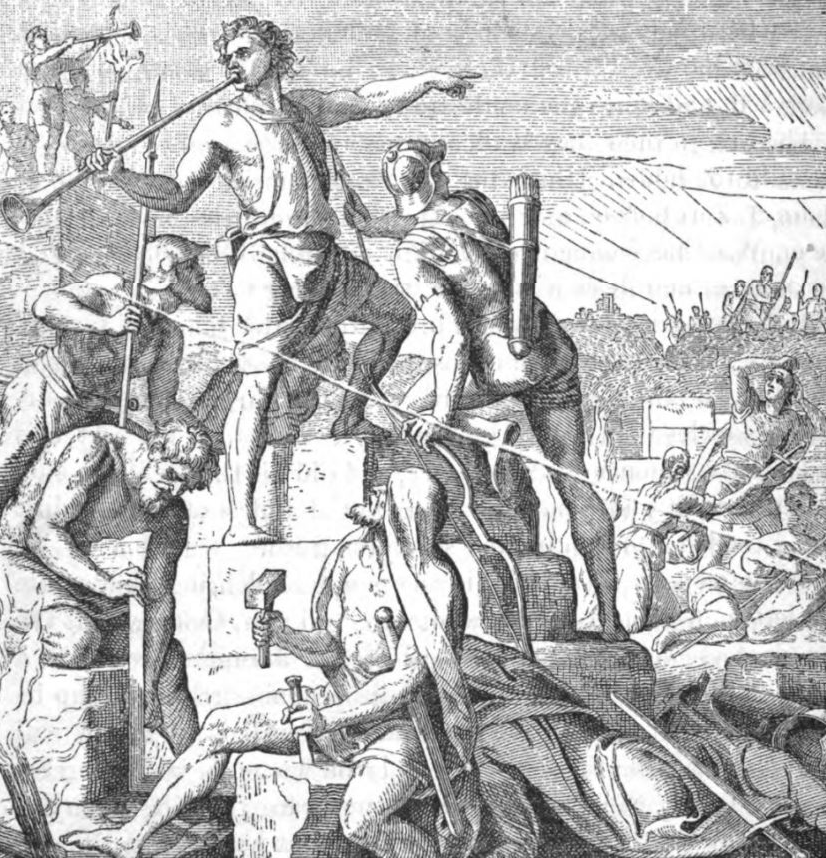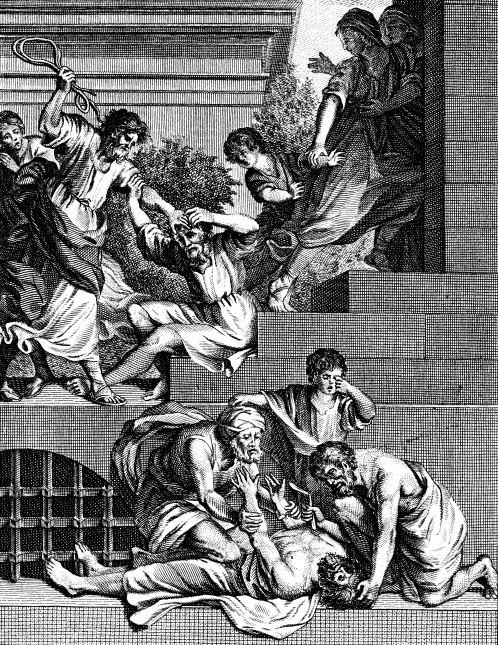

Prerequisite Reading
For an enhanced backdrop to this revival account, we strongly recommend reading the following accounts first:
► 521 B.C. Revival Under Zerubbabel, Haggai, and Zechariah
► 458 B.C. Revival Under Ezra
Historical Background
Following King Solomon’s death, his son Rehoboam ascended to the throne. Immediately following this transfer of leadership, a division of the nation occurred, resulting in the formation of the northern Kingdom of Israel, and the kingdom to the south taking on the name the Kingdom of Judah.
In 722 B.C., because of their rebellion against God, the northern Kingdom of Israel was allowed to be disciplined by a military defeat, and the people were forcefully exiled by the Assyrians, with the Kingdom of Israel never rising again.
The southern Kingdom of Judah, not learning from the Kingdom of Israel’s failure, also experienced God’s discipline and was overthrown by the Babylonians in 587 B.C. At this time the city of Jerusalem was destroyed and except for a small number, most of the people were forcefully deported to Babylon where they were enslaved for 70 years.
Difference in Exiled Status
What was different between the two kingdoms while in exile was that the people from the Kingdom of Judah were permitted to own property, hold public office, and continue their worship of God—remaining a distinctly different people from their captors. Those of the northern Kingdom of Israel evidently intermarried and blended in with the people they were living among, leaving little to no evidence of their existence—even to this very day.
Evidence that God’s Discipline Worked on the Kingdom of Judah
The Jews living in Babylon were greatly impacted by the humiliation they experienced at the hands of the Babylonians. This led to repentance, which is evidenced with the following observations:
► They became monotheistic, giving up idolatry completely.
► They remained uniquely separate from those they lived among.
► They developed a new longing for the Messiah.
► The Pharisees emerged during this era of Jewish history and were instrumental in keeping the Messianic hope alive.
► They developed theological literature and their interest in the Law of Moses was renewed.
► Synagogues were established as a place of worship, which centered on God’s Word, prayer, praise, and study.
► Judaism became more personal, and not merely rituals.
► They became a missionary people to all the nations.
Defeat of Babylonians by Persians
In 539 B.C. Babylon fell to Persia. One year later, in 538 B.C., the Persian king, Cyrus, made the proclamation that Jews were free to return to their homeland. Yet what occurred was that after 70 years of flourishing in Babylon, when the Jews were granted permission to return, most chose to stay and enjoy the comforts of life in Babylon. Of those that did return, they migrated in three known groups:
► First: led by Zerubbabel, with 49,897 people returning in 539 B.C. (Ezra 2:64-65).
► Second: led by Ezra, with 1,754 people returning in 458 B.C. (Ezra 8:1-20).
► Third: led by Nehemiah, with an unknown number returning in 444 B.C.

Nehemiah was the Persian king’s cupbearer (Nehemiah 1:11)
Nehemiah
This post will not discuss Nehemiah’s civic mission of rebuilding the walls around the city of Jerusalem. It will focus on his efforts in keeping sinful and polluting influences out of the city and away from the returned Jews.
NOTE: Nehemiah was a participant in the spiritual revival that occurred in Jerusalem under Ezra’s leadership (Nehemiah chapters 8-13).

The route of travel between Babylon and Jerusalem. A journey of approximately four months (Ezra 7:9)

Nehemiah examining the walls of Jerusalem (Nehemiah 2:11-15)
The Cycle of Revival
We have shown in our revival account 1374 B.C. Eight Revivals in the Book of Judges that all through Jewish history, as well as through Church history right up to this present day, God’s people repeatedly experience revival, and then in a very short period of time regress again to their former condition of lukewarmness, apathy, indifference, and complacency about the mission God has called them to.
Nehemiah 9:28 exemplifies this repetitious cycle of revival where we read:
But as soon as they were at peace [experienced revival], your people again committed evil in your sight, and once more you let their enemies conquer them. Yet whenever your people turned and cried to you again for help, you listened once more from heaven. In your wonderful mercy, you rescued them many times!

Rebuilding the walls of Jerusalem and standing guard at the same time (Nehemiah 4:16-18)
Cycle of Revival Recognized Following Zerubbabel’s Revival
Zerubbabel dedicated Jerusalem’s new temple in 515 B.C. and Ezra’s group arrived around 57 years after that temple’s dedication. Tragically, in that short period of time, we find that sin had crept in, and spiritual reform was desperately needed again (Ezra 9:1-2).
Cycle of Revival Recognized Following Ezra’s Revival
The revival Ezra led, of which Nehemiah was a part, occurred in 458 B.C. Following that we find that Nehemiah returned to Babylon for a short period of time, and when he returned, he found the following:
► A corrupt high priest, Eliashib, had formed an alliance with one of Nehemiah’s worst enemies, Tobiah. Tobiah was an Ammonite, from a race of people forbidden to enter the temple, but Eliashib allowed him a room in the temple in which to live and conduct his business (Nehemiah 13:1-9; Deuteronomy 23:3-6).
► The Levitical system of worship had a total breakdown. With Levites and singers not being provided for, they were forced to leave their temple service and return to work in the fields (Nehemiah 13:10-14).
► The Sabbath Day was desecrated, as people worked their fields, treaded out grapes to make wine, and conducted business in the marketplace, as if the Sabbath was just another day of the week (Nehemiah 13:15-22).
► After having made a pledge not to intermarry with pagans (Nehemiah 9:38; 10:1-39), they were again found doing that very thing (Nehemiah 13:23-31). Ezra encountered that same moral decline years earlier when he first arrived in Jerusalem (Ezra 9:1-4).
The Prophet Malachi Gives Evidence of the Degraded Conditions of Jerusalem
The three mentioned prophets following the Babylonian captivity are Haggai, Zechariah, and Malachi. Haggai and Zechariah were instrumental in the revival led by Zerubbabel. Those two men prophesied and inspired the continuation of the building of the temple. Though Malachi is never mentioned in the books of Ezra or Nehemiah, he is believed to have conducted his ministry during this time, and the sins he points out in his writings correspond with what Ezra and Nehemiah faced.
► The people dishonored God by offering blind, lame, and sick animals for sacrifices (Malachi 1:6-14).
► Divorce was rampant (Malachi 2:14-17).
► The people were robbing God by not bringing 10% of their produce to the temple as an offering, which was to go toward the support of the temple system (Malachi 3:8-11).

Nehemiah enraged at the rapid lapse into sin (Nehemiah 13:25)
Lesson from Nehemiah
The most significant lesson that can be learned from Nehemiah’s efforts is that maintaining a revival can be just as challenging as the effort put into seeing it begin.
Ezra’s efforts in producing a revival generated tremendous fruit, but the fruit immediately began to rot. Most who mention Nehemiah will undoubtedly speak of his work in leading the construction of the walls around Jerusalem. But quite possibly an even more significant contribution was his work in trying to keep the spiritual revival alive.
Though revivals never have to die, it is true that they rarely last more than a few months to a few years. This has not been due to the sovereign will of God, for God never wills for his people to decline into states of sinfulness, and revivals always die due to sin. That is the biblical pattern, and it is the same reason revivals die today.
Return to List of Revival Stories
Chet & Phyllis Swearingen:
Office: (260) 920-8248
romans1015@outlook.com
Beautiful Feet
P.O. Box 915
Auburn, IN 46706

